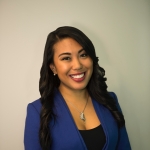
Lara Davis
Justice in Education
Posted by Jun 05, 2015

Lara Davis
Across the country, communities are calling for justice in education. High stakes testing, disproportionate discipline by race, and the mass closing of public schools in certain regions profoundly impact the lives of young people. In an environment where education reform, vouchers, charter schools, and increased accountability dominate the landscape, what does it mean to impact the very heart and bureaucratic structure of public school districts and build trust, equity, and meaningful change?
Read More


 Arlene Goldbard
Arlene Goldbard


























